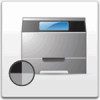Lexmark Monochrome Laser Complete Printer Reference (1.7 MB) - Page 136
Mailbox Overflow setting, Type Assignment setting, Output options, Drivers, MarkVision and, Utilities
 |
View all Lexmark Monochrome Laser manuals
Add to My Manuals
Save this manual to your list of manuals |
Page 136 highlights
This setting is ideal when you repeatedly print large jobs. If you link all paper trays and all output bins, you can continually print large jobs (up to 2000 pages with a mailbox option attached and 2500 sheets with a finisher option attached) without having to continually load and remove paper from the printer's paper trays and output bins. See "Configure Bins" on page 37 for more information about tray linking. Note: To take full advantage of this feature, we recommend attaching the optional 2500-sheet drawer. Using MarkVision, you can link bins together by assigning user-defined names for each bin. If you assign multiple bins the same user-defined name, they are effectively linked together and only appear once as a value for the Custom Types menu item in the Paper Menu. For more information on using MarkVision, refer to the Drivers, MarkVision and Utilities CD. Mailbox Overflow setting When you set Configure Bins to Mailbox Overflow, each output bin is treated as a separate mailbox, with one bin designated as an overflow bin. If the current output bin becomes full, the printer diverts the job to the output bin designated as the overflow bin. For example, if you select bin 10 as the overflow bin and you send your job to bin 1, once bin 1 is full, the printer redirects the job to bin 10. Once bin 10 is full, a message appears on the operator panel display prompting you to remove paper from both bins. This setting is ideal when you want the flexibility of individual mailboxes, but want to reduce the number of times you must tend to the printer while printing a job. Type Assignment setting When you set Configure Bins to Type Assignment, the output bin is determined not by which bin you select in the driver, but by the type of print media selected. For example, you can use the Type/Assign menu item in the Paper Menu to assign plain paper to bin 1, labels to bin 2, and card stock to bin 3. Then, when you send a print job on one of those types of media, the printer automatically determines the output bin by the Paper Type setting in the Paper Menu or by the type you selected though your driver. Note: You can use this setting along with the Paper Type setting in the Paper Menu to effectively link specific trays with output bins. This setting is ideal in environments where printing is job- and media-specific. If you print a specific job repeatedly on plain paper, a second job on labels, and a third job on card stock, you can easily keep them separated by assigning a bin to each media type. Output options 136















